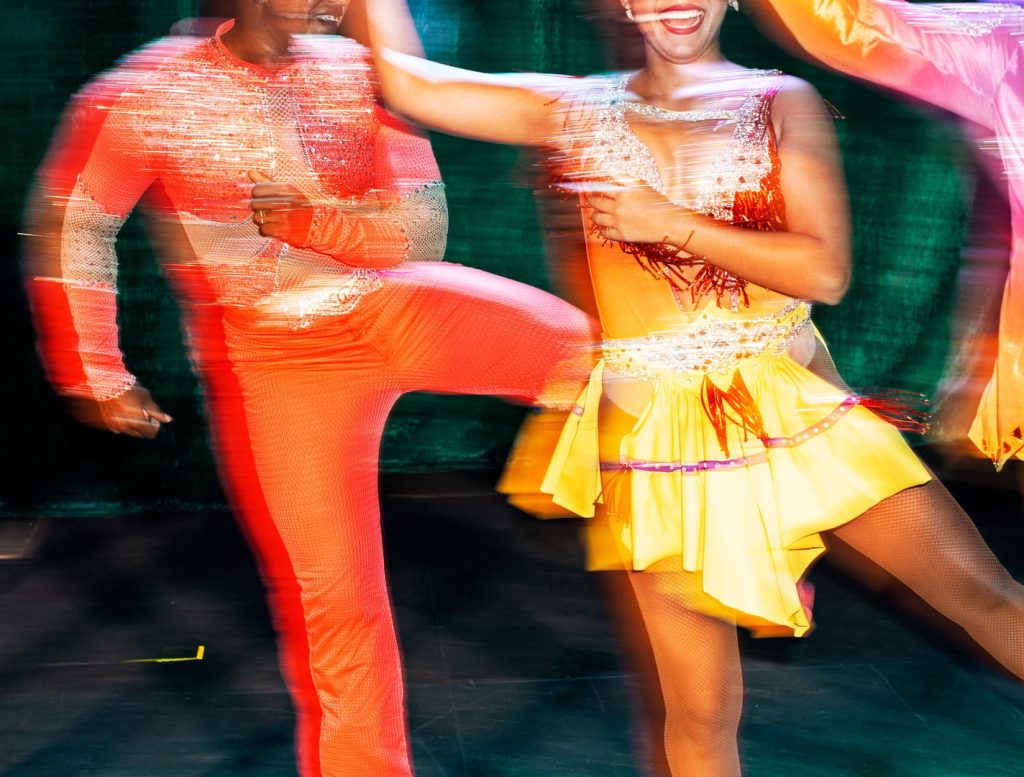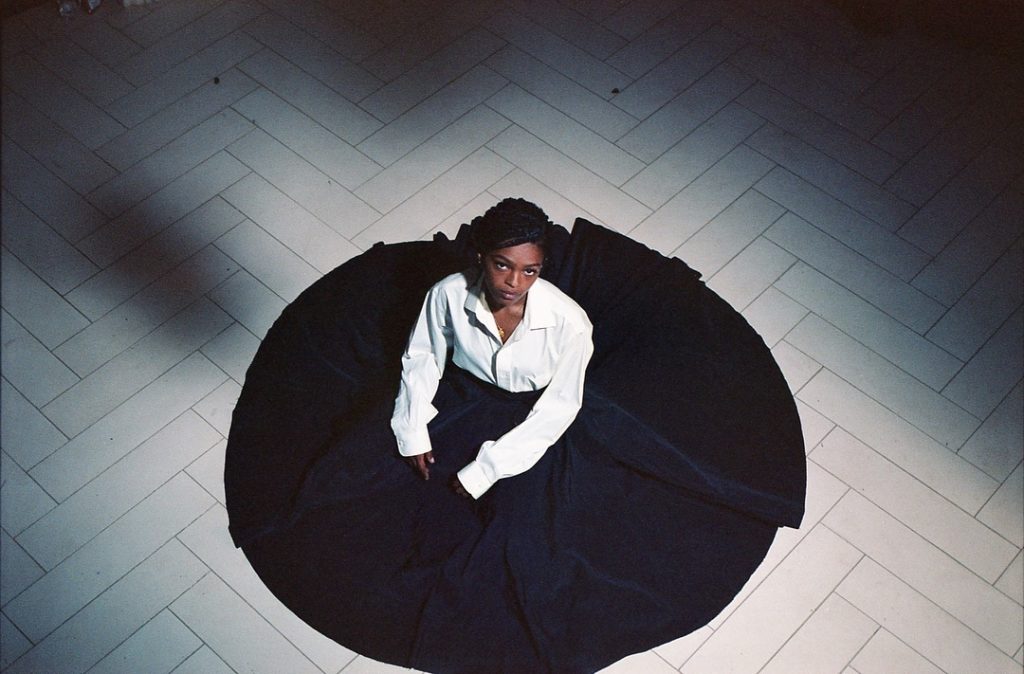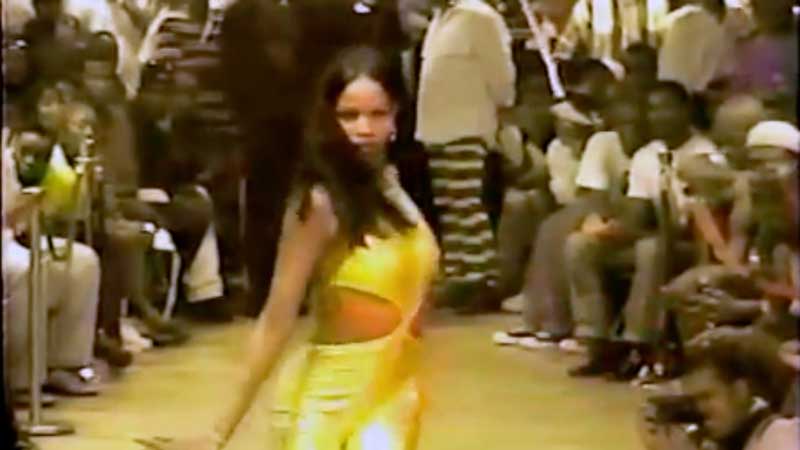The Dancer’s Paradox
T A P E Presents: It’s a Trance, It’s a Dance
The double exposure embedded in dance: the real bodies and the allegories they construct with motion, as represented in a T A P E programme at London Short Film Festival.

Dancing is its own kind of storytelling. One which features the body as both the paper and the pen, as the teller and the story; but what does that privilege mean for the human body, it’s only object and matter? By recording these motions, their rhythm, their time, and their gracious transformation flowing from one to the next, the camera can help us dissect and understand what exactly are the stakes in that seemingly non-taxable beauty. No art form is innocent, all of them have benefitted from biases and prejudice, often excluding those who need it the most. The London Short Film Festival programme curated by T A P E collective invites us to think about this double exposure embedded in dance: the real bodies and the allegories they construct with motion.
Around the halfway mark of C’EST LA, we see protagonist Selah Marley in two roles, intercut and intertwined: one is smartly-dressed in front of a mirror, and the other—undressed, in the shower. In a set-up which would usually make a curtain out of the screen (metaphorically speaking) to separate one intimacy from another, director Godfred Sedano opts for a more radical move, confining the two chronotopes to two different framings—wide-screen for the clothed, square ratio for the showering. With Rony Xavier Portillo’s bouncy camera moves, the exploratory nature of confronting one’s own body with and without clothes becomes ritualistic, as if the process will unlock something dutifully hidden until now. We are given a peek of one’s most intimate—the creative process—allegorised as a self-discovery, the way one grows inside one’s skin and becomes oneself.
A similar rebirth by self-negation haunts Black Molasses, a short film/music video by Brighton based modern soul singer-songwriter Scarlett Fae, co-directed by Nathan Shadrach. Only after spending a whole Sunday with G, from waking up at a guy’s house, to being scolded by her mum for not going to church, we as viewers have earned the right to share her most intimate space, performing. The performance itself is framed as a music video within the short (a statement about how inseparable these two artforms can be), and begins as soon as G slips underwater in a symbolic death. With her singing, we learn more about the character herself: a woman’s slipping away and her wounds refuse to heal. Such images beset the lyrics of a soulful song birthed as a hymn to the hurt of Mother Earth, personified. G is now Gaia and white linen dress brushes the forest floor as she twirls in carefully choreographed attempts to escape. But the sky is open, there is no one else around beside her dancers, what could she be running from?, you ask. Every dance contains a desire to outgrow oneself, to stretch beyond the physical boundaries of one’s body, to become pure movement and maybe even be ephemeral, if only for a little while.
Gaia’s dancers are her protectors, circling her as a fortress of bodies who belong to her as a gravitational force, a core, a meaning-making machine. Each and every one of them seems rock-solid as their muscular bodies stand by, but once Gaia initiates the dance, firmness is countered with soft vulnerability. It is in the exposed, toned chests that one can see a readiness to be wounded—uncovered and unprotected. Yet, they are ready to guard their Gaia with mouldable, half-naked bodies as every human denounces their roughness when they are unclothed. Black Molasses implements dance as resurrection, safeguarding exposedness that can be found at the heart of every call for preservation. Dancing as salvation then becomes the central theme, instead of a desire to transcend the body, the dance of Gaia and her mortals calls out for cosmological care and ecological awareness at once.

C’EST LA
Kukeri also proudly wears its paganism on its sleeve. A documentary short directed by Daniel Ali captures one of the most mysterious traditions in Bulgarian folklore which lends the film its name. The ‘kukeri’ are humans (traditionally men) whose communal duty is to ward off evil spirits at the beginning of every year; they do so by wearing enormous, hairy costumes, with numerous and sizable bells hanging as well (think Toni Erdmann). Dressed and masked appropriately, these people then dance in tandem while walking the towns and forests of Bulgaria’s southwest, being both the dancer and the musician with their rhythmic stride. Even more, their movements become good luck tokens, a magical transformation captured through Jacob Schühle Lewis’s observational camera: slow-motion, pulsating textures, sunlight bouncing off their animalistic attire.
It’s also a familial story, where mother, father, and daughter are all embedded in this apotropaic tradition. The first-person monologues of the people inside the costumes and behind the masks carry the viewer through these undecipherable motions, these arcane rituals to keep some personified evil at bay. They all refer to this untranslatable word of Turkish origin—‘merak’—which is subtitled as either ‘feeling’ or ‘passion’, but its heart lies somewhere in between. One bit of talent, another bit of inner tuning to the supernatural in the natural, a way to channel luck through movements, to express a wish for fortitude through dance. In a way, this same disposition is shared and reiterated again and again in all the shorts of this T A P E programme—the corporeal desire to communicate.
“A body is marked by its past,” reads the first shot of Snap: Archie’s Story, a seven-minute video narrated by star vogue dancer Archie Burnett (aka the Grandfather of the House Of NINJA). We are treated to a snappy (!) collage video, whose main objective is to map out a story of one dancer’s body in bite-size chunks with gusto and a good amount of humour. Directed by Canadian dancer-choreographer-teacher George Stamos, Snap is a love letter to an unyielding resilience. What starts off as a straightforward biographical recounting soon ends up a story made up of injury accounts and mismatches: Archie’s knee snapping to a ‘POP’ sound, a throwaway remark about the colour of braces unsuitable for black skin, and witty illustrations that literalise the largely metaphorical language in which the dancer lists his painful episodes.
What makes Snap really stand out is the tonal ping-pong exchange between words and images. When, for example, we have seen a rendition of a broken meniscus made up of x-rays and twigs splitting, we can no longer look at the glorious shots of Archie’s signature vogue moves and observe the angulations of his legs bent at the knee without wincing with phantom pain ourselves. We’re nudged to laugh by witticisms and facetious montage, and yet something holds us back. That ‘something’ is the pain of others: untransferrable and yet real to the bone.
Dance is funny like that: we often find ourselves mesmerised by the gracious flight of a body in space, malleable and soft as it plunges through—often lighter than air itself. Behind such defiance of gravity lies the procured, well-trained ability to soften your hardness, to sharpen your skills, to teach your muscles to obey the rhythm in just the right way, in order for this meticulous process of extended labour to be concealed in a beautiful form. Ina (Light) frames the struggle as a move from darkness to light, an inventive swap of one dyad for another, more cinematic one. Two black dancers fight against a suffocating darkness with the only tools they have—their bodies in movement—so they can get a (well-deserved) glimpse of light at the film’s end. To express this move, Alesandra Seutin’s choreography gradually transforms frantic, anxiously angular thrusts into smoother, often intertwined advances as the couple learns to embrace one another’s presence and meld together.
A gentle voiceover in Inside Out talks about expressing oneself through dance, the responsiveness inherent to such interactive movements, collating an ode to self-expression in a free-floating visual style guided entirely by bodies and their spins. Set on a tropical island, at sunset, or sunrise, at the edge where ocean meets land, this short showcases the many strands of experimentation that come into play at the Indoni Dance, Arts and Leadership Academy. A communal space, a spatial community which takes on many roles—tribal allegiance seen as cumulative movements and touch, masks and decorations to signify the artform being weaved in every step of the way, improvisation and choreography that cannot be strictly told apart. Unison is another word for communication in this one, and the wide shots are bursting with bodies in full sway, while roles break away their tetherness to either artificiality or authenticity. The rhythmic montage is uplifting, mesmerising even, in the way it correlates both width (togetherness) and height (transcendence). How can all of this resplendent beauty be contained in singular bodies, when they come together so alive?

Safe Space
Containment, but of a more frightening kind, is the main theme of The Butterfly Affect, a moving story which parallels the captive life of a butterfly and the forcefully concealed ballet dream of a teenager. Edem Wornoo’s short establishes the link early on when we meet Iris, a young black ballet dancer living in a South London council estate, where everything seems designed to keep him as far away from his vocation as possible. Rules of masculinity are like gravitational forces that pull him in again and again, peer pressure, judgemental stares, and the death of his own pet-butterfly foreshadow an impossible future. But in the film’s three parts—cocoon, caterpillar, butterfly—there is evidence of fears dispelling, interspersed between dance sequences. “Don’t just show me, make me feel what you feel,” says the ballet instructor as Iris is preparing for his piece. How can dance communicate immediate feelings with such ease? And can cinema add anything to that transference? According to Wornoo, a film’s allegorising power can help us overcome insecurities, face a mirror, and realise where our true strength lies: in ourselves, our bodies, their resilience and ability to connect when we cannot find the courage to do so alone.
But connecting often means exposing oneself to the bare essence and there are those who cannot afford the luxury of controlling that defenselessness. In Safe Space artist Mirelle Borra explores the interpellation of the personal and the political by deterritorializing both at the level of sound and image. In this ten-minute short, AI voices recount stories of many refugees in candid detail, overlaying them on top of a supercut of ballroom events from the early 90s New York. A lot is implied without being said: the ballroom spaces were safe, allowing marginalised people to express their identities and belongings through their bodies. The testimonies belong to LGBTQ+ refugees from places as diverse as Iran, Syria, Indonesia, Saudi Arabia, Uganda, Brunei, Azerbaijan, Morocco, Iraq, Uganda, Zimbabwe, India, and Brunei. Zooming in on this intersectionality prevents Bora from turning testimony into matter of fact. On the contrary, her attention to a minority within a minority suggests she recognises the true power of cinematic editing. When bodies are denied their identities, when they are detained and regimented, subsumed into a foreign order, the one closeness a film can afford, is by montage and voiceover: pairing freedom and the present in a way that seems unattainable right now.
The feeling of ostracisation is also at the heart of Pointe Black, a documentary portrait of Marie-Astrid who is a French black ballerina in a white-privileged art. Her own narration retraces her first ballet steps, the burning desire she felt dedicating herself to dancing, as well as the prejudice and bullying she has endured for years in Paris. From the telling detail of how her ballet slippers have never matched her skin colour, effectively shortening her legs, instead of visually elongating them, to the remarks that she was not “femme enough” to be a ballerina, all these memories sound piercing and her tone—simmering with unarticulated anger. “I eat, sleep, and breathe ballet,” she says addressing the camera as she discards the nude slippers to dance barefoot, symbolising her newfound freedom. Her story is one of success, but at what cost? Why do we fail to notice that an artform heralded as pure expression is also the one that demands from bodies to become invisible, but only if they are white?
“It’s a Dance, It’s a Trance” takes its questions seriously, without reducing dance to just one thing: be it beauty, art, power, or communication. It is a line of flight, but also a tool for self-awareness and while these films tell stories of humans as social actors, as characters in their own story, every dance sequence feels so much more like documentary than fiction. Even in the programme’s closing film, From Heaven is Cali, an ode to Salsa Caleña as a cultural emblem, spectacular rhythms and acrobatics may dazzle the viewer without taking away any of the pleasures of observing human bodies in timed motion. Dance is about keeping time, but it also keeps time in the sense of continuity and tradition. With or without elaborate costumes, tuned to whatever music, dancing always refers to something else— we can read stories into bodies depending on how they move—while also keeping true to the literal bodies on screen. Dance is not acted, it’s not played—it’s danced. As simple as that and as complicated as that, it retains all the tropes of fiction while remaining factual and in its paradox we find everything that matters: ethics, politics, and the soul.
